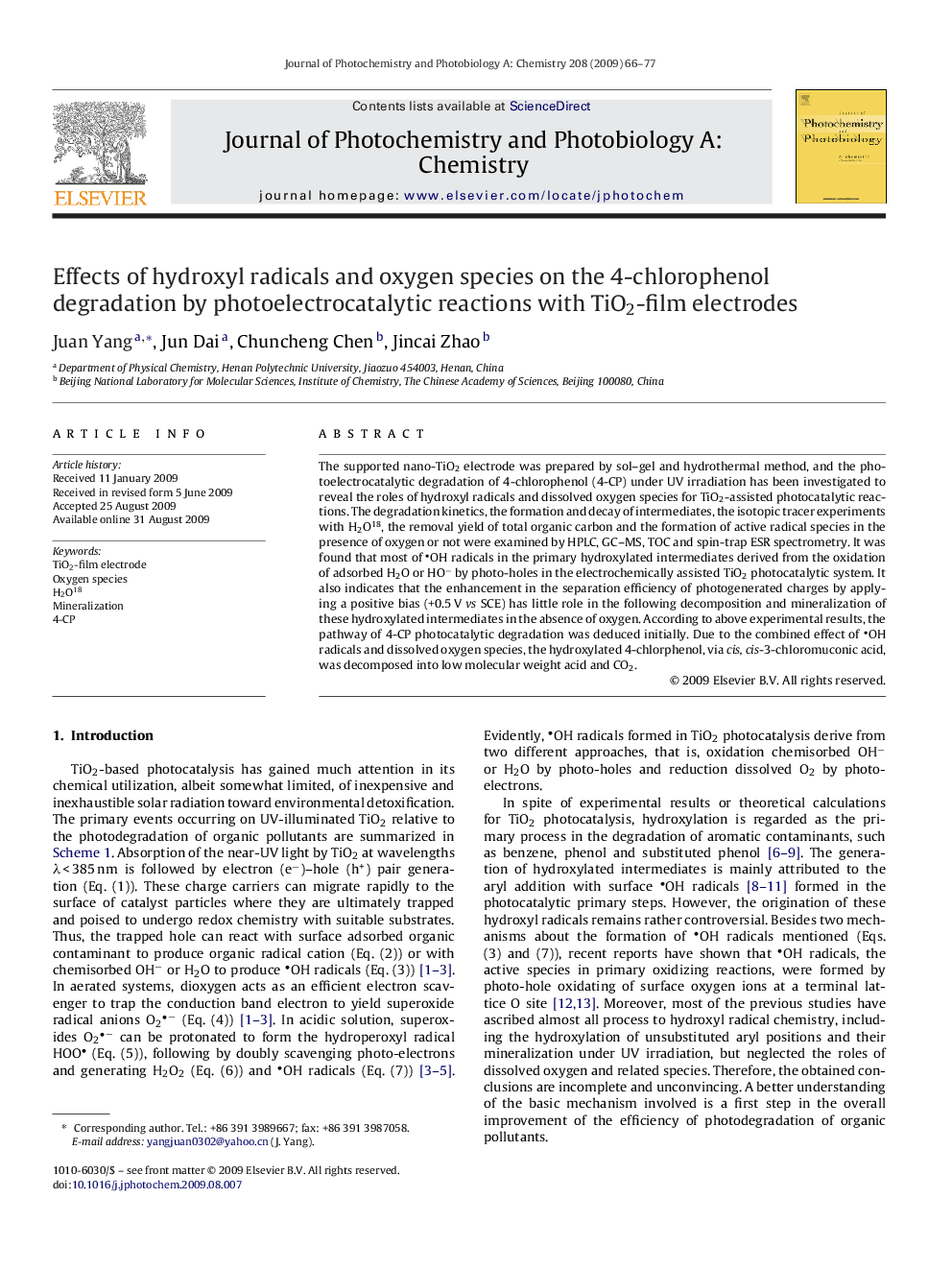| Article ID | Journal | Published Year | Pages | File Type |
|---|---|---|---|---|
| 27227 | Journal of Photochemistry and Photobiology A: Chemistry | 2009 | 12 Pages |
The supported nano-TiO2 electrode was prepared by sol–gel and hydrothermal method, and the photoelectrocatalytic degradation of 4-chlorophenol (4-CP) under UV irradiation has been investigated to reveal the roles of hydroxyl radicals and dissolved oxygen species for TiO2-assisted photocatalytic reactions. The degradation kinetics, the formation and decay of intermediates, the isotopic tracer experiments with H2O18, the removal yield of total organic carbon and the formation of active radical species in the presence of oxygen or not were examined by HPLC, GC–MS, TOC and spin-trap ESR spectrometry. It was found that most of OH radicals in the primary hydroxylated intermediates derived from the oxidation of adsorbed H2O or HO− by photo-holes in the electrochemically assisted TiO2 photocatalytic system. It also indicates that the enhancement in the separation efficiency of photogenerated charges by applying a positive bias (+0.5 V vs SCE) has little role in the following decomposition and mineralization of these hydroxylated intermediates in the absence of oxygen. According to above experimental results, the pathway of 4-CP photocatalytic degradation was deduced initially. Due to the combined effect of OH radicals and dissolved oxygen species, the hydroxylated 4-chlorphenol, via cis, cis-3-chloromuconic acid, was decomposed into low molecular weight acid and CO2.
